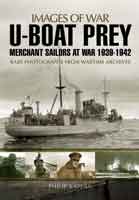Building for Battle: Hitler's D-Day Defences (Hardback)
Imprint: Pen & Sword Military
Pages: 176
Illustrations: 150
ISBN: 9781526705402
Published: 8th November 2017
(click here for international delivery rates)
Order within the next 6 hours, 9 minutes to get your order processed the next working day!
Need a currency converter? Check XE.com for live rates
| Other formats available - Buy the Hardback and get the eBook for free! | Price |
|---|---|
| Building for Battle: Hitler's… ePub (39.5 MB) Add to Basket | £6.99 |
Following nearly two years of planning and exacting preparation, Operation Overlord, the Allied invasion of the Nazi-dominated European continent, was mounted in the early hours of 6th June, 1944. It was to be a pivotal event leading to the end of the Second World War and victory for the Allied forces. The invasion itself was centred on the largest amphibious landing operation in history. It involved 7000 naval vessels, 3000 aircraft, 17000 American and British paratroopers and thousands of additional military personnel. What awaited the Allied landing forces - many of them suffering the effects of sea sickness when they were delivered into the surf of the five main landing beaches on the Normandy coast of France - were key elements in the formidable defences of Hitler’s vaunted ‘Atlantic Wall’. The Wall was a 2500-mile chain of various types of fortifications stretching from the North Cape to the Bay of Biscay. That portion of the German defences between Caen to the east and Cherbourg to the west was particularly menacing, due largely to the planning and implementations of Feldmarschall Erwin Rommel, appointed by Hitler to take charge of the Atlantic Wall defences.
D-Day Defences revisits many of the locations within the five-beach landing area of the invasion forces, focusing on the various aspects of the German fortifications, the types of defensive systems employed against the American, British and Canadian invaders, and the results experienced by both invaders and defenders in the Allied struggle to gain and hold possession of that pathway to Berlin.
Feldmarschall Rommel was completely correct in his view that the first 24 hours of the Allied invasion of France would be decisive, and that if they were able to secure a foothold then it was inevitable that his forces would eventually be overwhelmed by their superior strength, supplies and near complete dominance of the skies. His answer was the Atlantic Wall; the vast and impressive chain of fortifications stretching along almost the entirety of the western coastline of occupied Europe, and which he hoped would severely disrupt the invasion forces as they waded ashore and deny them a viable beachhead. This richly illustrated book, which includes many large photographs of the Atlantic Wall at the time and its surviving sections today, describes its elaborate construction, the different types of defensive systems employed, and the plans and experiences of those who both assaulted and defended it.
Pegasus Archive
Read the full review here
As featured by
The Armourer, January 2020
As featured by
Gun Mart, April 2018
The book is well illustrated throughout, with a mix of archive photos, maps, some battlefield relics and especially modern day photos of many of the remaining bunkers and defences which remain to be seen today, over 70 years later.
Military Model Scene - Robin Buckland
Read the complete review here.
Books dealing with D-Day and the battle for Normandy tend to be fairly perfunctory when it comes to the Nazi defences, unless they are battlefield guides. Prolific author Philip Kaplan’s welcome analysis helps fill this gap. Lavishly illustrated in b/w and colour throughout, one of its strengths is the then and now photos - these show the fate of Hitler’s formidable Atlantic Wall. While reassessing the likes of Pointe du Hoc, Merville and Longues-sur-Mer, Kaplan also tackles the myth of the German 352nd Infantry Division at Omaha. A concise introduction to the topic - highly recommended.
Anthony Tucker-Jones, writer and military historian
The story of the Allied landings in Normandy, and the German defences there, is considerable and complex. The author has produced a nicely researched work with many very good illustrations through the body of the book – Recommended.
Firetrench
Read the complete review here.
About Philip Kaplan
Philip Kaplan is a Californian author and art-director who now lives in Cheltenham with his English wife, also an author. He has a long-standing fascination with aviation and naval history and has had ten previous books published by Abbeville, Cassell, Random House and Aurum. To date his books have sold well over a quarter of a million copies world-wide.




















